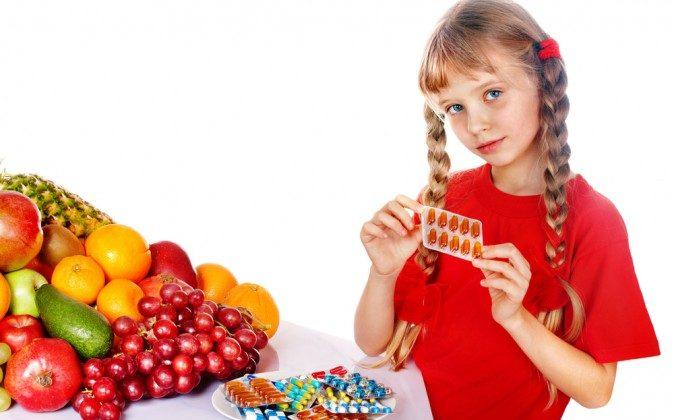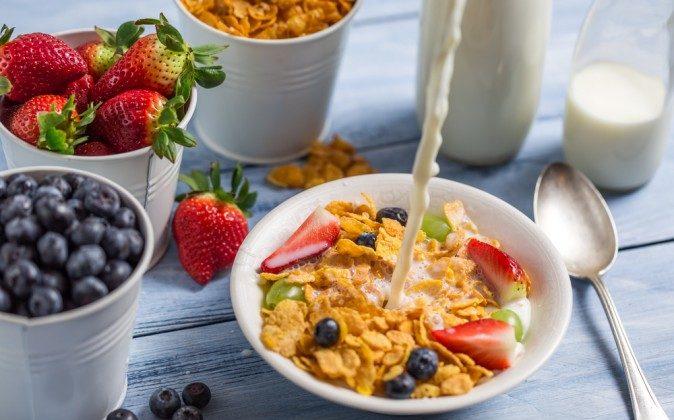Australian parents spend $40 million each year on vitamin supplements for their children. It’s a big number; much smaller is the number of children who actually need them.
In 2009, a large American research survey found that, in industrialised countries, the children most likely to be given vitamin supplements were the ones least likely to need them.
Supplement use reflected parental anxiety about kids’ eating habits rather than any real nutritional deficit.
Why worry?
But where does this anxiety come from? Can we blame manufacturers’ marketing strategies? It’s quite tempting, given the increase in provocative products such as vitamin jubes, which contain quite small doses of vitamins and up to 50% sugar. Note that this doesn’t need to be stated on the label if the product is a “therapeutic good” (such as a vitamin jube).
It seems processed food companies have successfully convinced a lot of people that they don’t have time to cook real food, and supplement companies capitalise on this by piquing anxiety about the nutritional fallout.
A vitamin supplement might provide reassurance for parents in the short term, but the real issues for kids’ health in Australia are the longer-term ones about the food and activity behaviours they learn. These become habits – the habits of healthy eating and enjoying regular vigorous physical activity, or dietary short cuts and sedentary behaviour.
Consider the long-term behaviours children are learning when we encourage them to pop a pill or a jelly lolly, instead of eating well. Clearly, confectionery with vitamins in it fails in more than one way!
No need for pain
Healthy eating doesn’t have to be time-consuming or complicated, and it doesn’t have to involve force-feeding anyone brussels sprouts if they don’t like them.
You can meet the vitamin needs of a primary-school child with simple meals such as an egg-and-lettuce sandwich with an apple; a bowl of cereal with milk and sliced banana; baked beans on toast; or a chop with potato, carrots and peas and a tub of yoghurt.
Key behaviours that really make a difference to nutrition are avoiding snack foods in favour of fruit, vegetables or dairy food, sticking to just water or milk for drinks, and keeping fast foods and confectionery as occasional treats.
Nuggets, fries and a soft drink aren’t a meal, and adding a vitamin lolly to the lot doesn’t change that. And because nutrients work together as a team, they’re best consumed as food where the whole team is assembled, rather than in supplement products that have handpicked individual players.
Hidden problems
Apart from being a bit pointless in most cases, vitamin supplements can be risky, particularly if people think more means better. This is less likely to occur with vitamin lollies unless the child consumes the whole bottle, as the dosage in these products is usually low.
But other products could easily go over recommended limits. The daily requirement for vitamin C, for example, is only 35 milligrams, while most supplements, even those targeted at children, start at 100 milligrams.
The water-soluble vitamins (B group, C and folate) aren’t stored in the body, and excess is excreted in the urine, but long-term large doses can cause problems if they’re suddenly stopped.
The fat-soluble vitamins (A, D, E and K) can be toxic in excess as the body isn’t able to get rid of them easily. Symptoms of toxicity aren’t trivial – for vitamin A they include headache from increased brain pressure, muscle pain, blurred vision and loss of bone strength.
Most vitamin products don’t have sufficient warning about these risks as their labelling and advertising is poorly regulated.
The real issue
Supplements for children are definitely cheaper than anxiety drugs for their parents, but there is a real problem with Australian kids’ nutrition, and it’s increasing.
This one is about excess rather than a deficit: the 2007 Australian National Children’s Nutrition and Physical Activity Survey found children were generally meeting recommended levels of intake for the kinds of vitamins found in supplements, but exceeding recommendations for salt, sugar and saturated fat.
More Australian children are overweight and obese than ever before – over one in five, in fact. If they’re missing anything, it’s physical activity. Most already exceed the daily recommended limit of two hours’ screen time.
I’m not advocating a ban on vitamin supplements for kids: there are lots of children with chronic diseases, intestinal failure, or autism-related food issues, who genuinely rely on micronutrient supplementation in order to maintain good health.
But until we have a delicious chewy product that somehow boosts the daily exercise quota, supplements should be off the shopping list for all other children.
![]()
Suzie Ferrie does not work for, consult to, own shares in or receive funding from any company or organisation that would benefit from this article, and has no relevant affiliations.
This article was originally published on The Conversation. Read the original article.



Friends Read Free